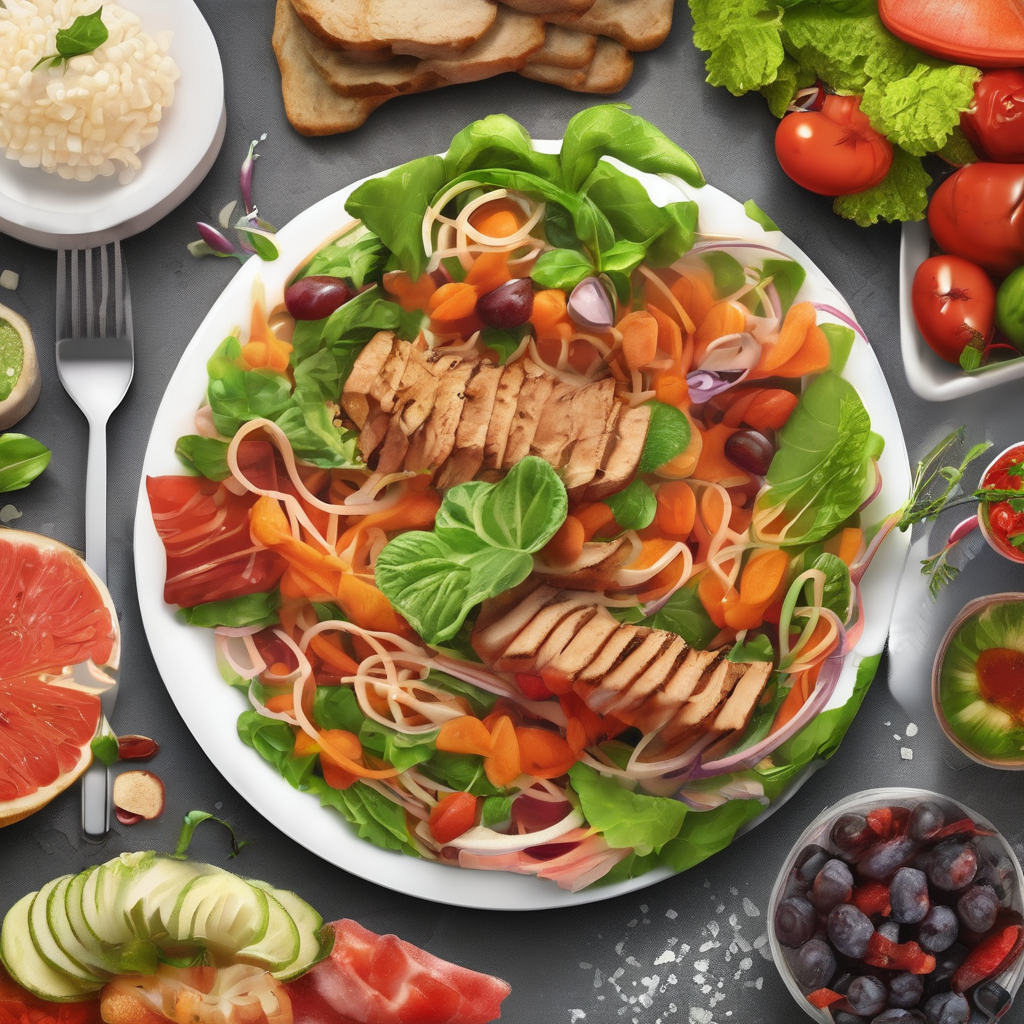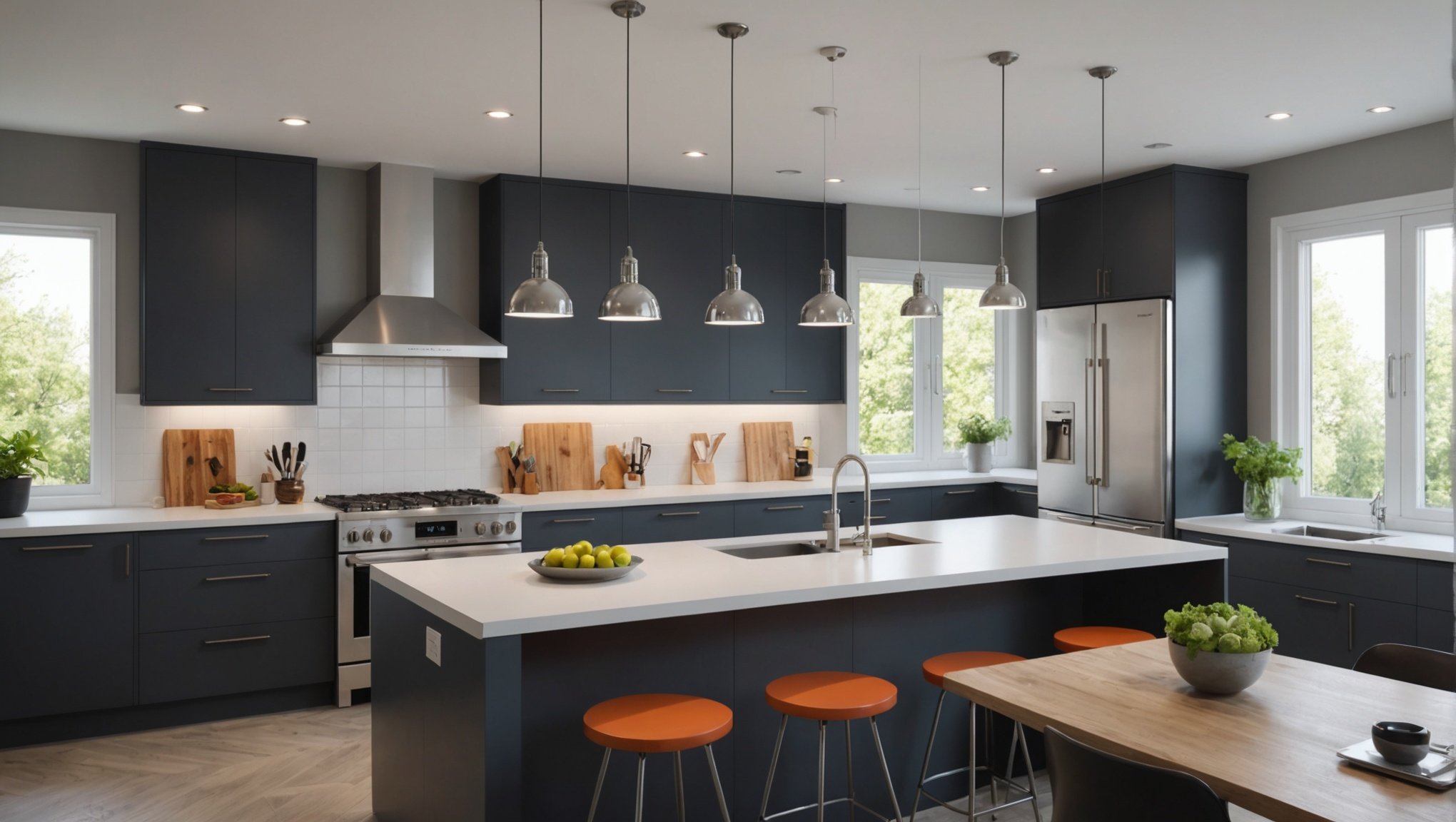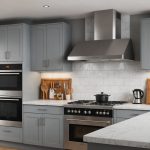Your kitchen is more than just a cooking space; it’s a hub of energy consumption. By rethinking your layout and design, you can unlock significant energy savings while enhancing functionality and aesthetic appeal. Smart design strategies not only cut down on waste but also create a more inviting environment. This exploration reveals practical tips and innovative ideas to transform your kitchen into an efficient, eco-friendly space without sacrificing style. Embrace the opportunity to save energy and elevate your culinary oasis.
The Importance of Kitchen Layout in Energy Efficiency
The kitchen layout plays a crucial role in determining a home’s overall energy efficiency. A well-planned layout can significantly reduce energy consumption, making your kitchen not only more functional but also environmentally friendly.
Have you seen this : Transform Your Kitchen: Innovative Design Tips for Effortless Recycling and Composting
Smart design principles focus on the strategic placement of appliances and work areas to minimise wasted energy. For instance, positioning the refrigerator away from heat sources like the oven can prevent it from working harder to maintain its internal temperature. Similarly, placing the sink, stove, and refrigerator in a triangular configuration, known as the “work triangle,” ensures efficient movement and reduces unnecessary energy use.
Optimising the kitchen workflow is another key aspect of energy efficiency. By arranging appliances and workspaces to facilitate smooth transitions between tasks, you can cut down on the time and energy spent moving around the kitchen. This not only saves energy but also enhances the cooking experience by making it more streamlined and enjoyable.
Topic to read : Transform Your Kitchen’s Atmosphere with the Magic of Multi-Color LED Lighting
Incorporating these smart design strategies into your kitchen layout not only benefits the environment but also leads to cost savings on energy bills. Adopting such measures can transform your kitchen into a model of efficiency and sustainability.
Practical Tips for Redesigning Your Kitchen Layout
When considering a kitchen redesign, focusing on energy-efficient design can lead to substantial savings and environmental benefits. Here are some practical layout tips to help you achieve this goal:
- Maximise Space and Minimise Energy Use: Efficient use of space can significantly reduce energy consumption. Consider installing cabinets that reach the ceiling to optimise storage without expanding the kitchen’s footprint. This reduces the need for additional lighting and heating.
- Appliance Placement: Proper placement of appliances is crucial for energy conservation. Keep the refrigerator away from heat sources like ovens and dishwashers. This prevents the refrigerator from overworking, thus saving energy. Similarly, ensure that the stove is positioned to allow for adequate ventilation.
- Natural Light and Ventilation: Incorporate natural light and ventilation into your kitchen design. Large windows or skylights can reduce the need for artificial lighting during the day, while proper ventilation helps maintain a comfortable temperature, reducing reliance on air conditioning.
By integrating these strategies into your kitchen redesign, you can create a space that is not only functional and stylish but also energy-efficient.
Examples of Energy-Efficient Kitchen Designs
Exploring energy-efficient kitchens can inspire your own redesign efforts. Here are some notable examples that showcase sustainable features and smart design.
Case Study: A Modern Eco-Friendly Kitchen
This kitchen integrates cutting-edge technology with eco-friendly materials. Energy-efficient appliances are paired with solar panels to reduce electricity use. The use of recycled materials for countertops and cabinets adds a sustainable touch. Motion-sensor lighting ensures that lights are only on when needed, further conserving energy.
Traditional Kitchen with Energy-Saving Upgrades
In a more classic setting, energy-saving upgrades can make a significant difference. This kitchen features LED lighting and energy-efficient windows that enhance natural light while reducing the need for artificial lighting. Upgraded insulation and efficient appliances ensure that the kitchen remains comfortable without excessive energy use.
Minimalist Designs Focused on Efficiency
Minimalist kitchens often focus on reducing clutter and maximising functionality. With a streamlined layout, this design incorporates induction cooktops and energy-efficient dishwashers. The use of sustainable materials and a neutral colour palette creates a calming environment that is both stylish and eco-friendly.
These examples illustrate how thoughtful design and sustainable features can transform any kitchen into an energy-efficient space.
Cost-Saving Benefits of an Energy-Efficient Kitchen
Investing in an energy-efficient kitchen can yield substantial cost savings over time. While the initial investment may seem high, the long-term savings often justify the expense. Energy-efficient appliances, for instance, significantly reduce utility bills. These appliances use less electricity and water, leading to monthly savings that accumulate over the years.
Consider the impact of replacing traditional appliances with energy-efficient models. Although the upfront cost might be higher, the reduction in energy consumption results in lower bills, providing a favourable return on investment (ROI). For example, energy-efficient refrigerators and dishwashers consume less power, translating to noticeable savings on electricity bills.
Case studies further illustrate the financial benefits of redesigning kitchens with a focus on energy efficiency. Homeowners who have implemented such designs report a marked decrease in utility costs. Over time, these savings often surpass the initial costs, making the investment worthwhile.
By prioritising energy efficiency, homeowners not only contribute to environmental sustainability but also enjoy financial rewards. The ROI from energy-efficient kitchen redesigns underscores the practicality of such investments.
Resources for Planning Your Kitchen Redesign
When embarking on a kitchen redesign, leveraging kitchen planning tools and design resources can streamline the process and enhance the outcome. These tools offer visualisation capabilities that allow you to experiment with different layouts, materials, and appliances before making any commitments.
Recommended Tools and Software
Several software options can assist in visualising your kitchen redesign. Programs like SketchUp and Home Designer Suite provide user-friendly interfaces for creating detailed kitchen layouts. These tools enable you to adjust dimensions, try various design elements, and even simulate lighting effects to see how your kitchen will look at different times of the day.
Expert Advice and Guidance
Seeking expert advice is invaluable. Consulting with professional kitchen designers can provide insights into the latest trends and technologies. Many experts offer online consultations, making it easier than ever to access professional guidance tailored to your specific needs.
Online Resources and Communities
The internet hosts a plethora of online resources and communities dedicated to kitchen renovation. Websites like Houzz and Pinterest are excellent for gathering inspiration and ideas. Additionally, forums and social media groups offer platforms to share experiences, ask questions, and receive feedback from fellow renovators, ensuring you have a well-rounded support system throughout your redesign journey.
Visual Inspiration for Your Kitchen Redesign
Visuals play a pivotal role in the kitchen design inspiration process, offering a tangible glimpse into potential transformations. They help homeowners conceptualise their ideal kitchens, making the abstract tangible. By examining before-and-after images, one can appreciate the profound impact of strategic design choices.
High-quality kitchen design images can be sourced from various platforms. Websites like Houzz and Pinterest are treasure troves of visuals that showcase diverse styles and layouts. These platforms allow users to create mood boards, helping to refine and focus their design preferences.
Successful kitchen transformations often highlight the power of thoughtful planning and execution. For instance, a cramped, outdated kitchen can be revitalised with modern cabinetry and open shelving, enhancing both functionality and aesthetics. Another example might showcase how integrating natural light and eco-friendly materials can transform a dark space into a bright, inviting area.
By exploring these examples, homeowners can draw inspiration for their own projects, ensuring their kitchen redesign aligns with both their vision and practical needs. Such visuals not only inspire creativity but also guide informed decision-making throughout the renovation process.
Expert Opinions on Kitchen Layout and Energy Efficiency
When it comes to designing an energy-efficient kitchen layout, expert advice from interior designers and architects is invaluable. They emphasise the importance of understanding both the functional and aesthetic aspects of kitchen design. For instance, experts highlight the significance of maintaining the “work triangle” to enhance both efficiency and energy conservation.
Interior designers often point out common pitfalls in kitchen redesign. One frequent mistake is neglecting the natural flow of movement, which can lead to unnecessary energy consumption. Another is the improper placement of appliances, which can cause them to work harder than necessary, increasing energy use.
Looking to the future, architects predict a growing trend towards integrating smart technology into kitchen designs. This includes the use of energy-efficient appliances and systems that can be controlled remotely. Additionally, there is an increasing focus on sustainable materials and designs that maximise natural light and ventilation.
By considering these insights and avoiding common pitfalls, homeowners can create a kitchen layout that not only meets their needs but also supports energy efficiency. This approach not only benefits the environment but also enhances the overall functionality and enjoyment of the kitchen space.







No responses yet